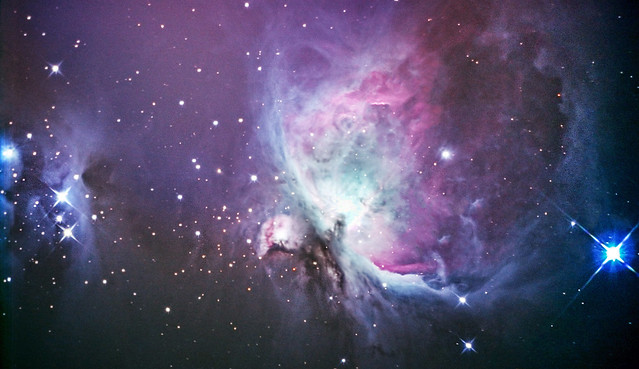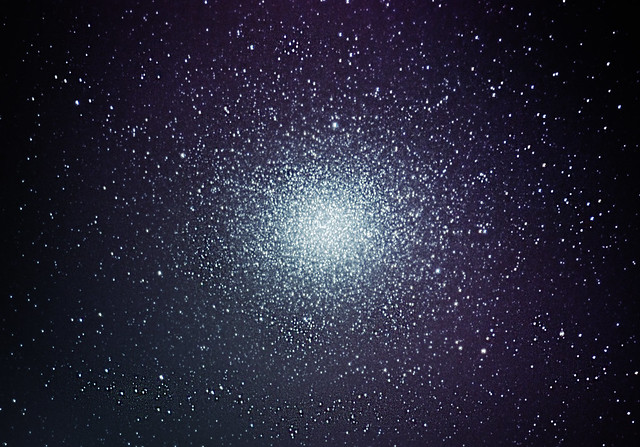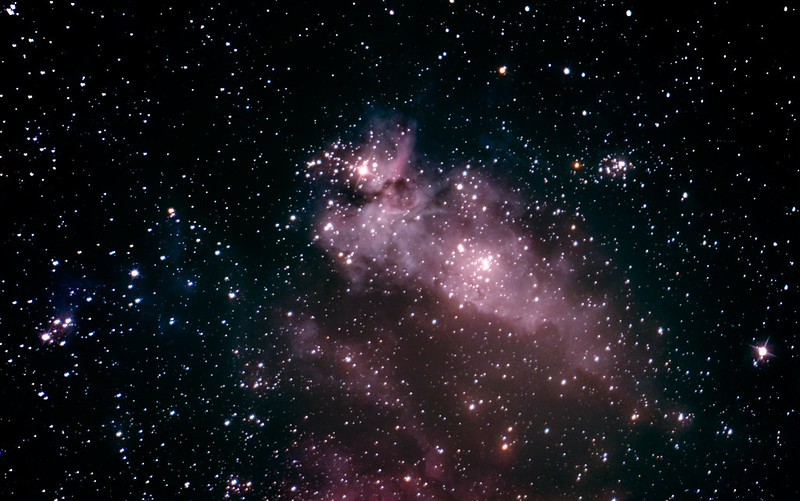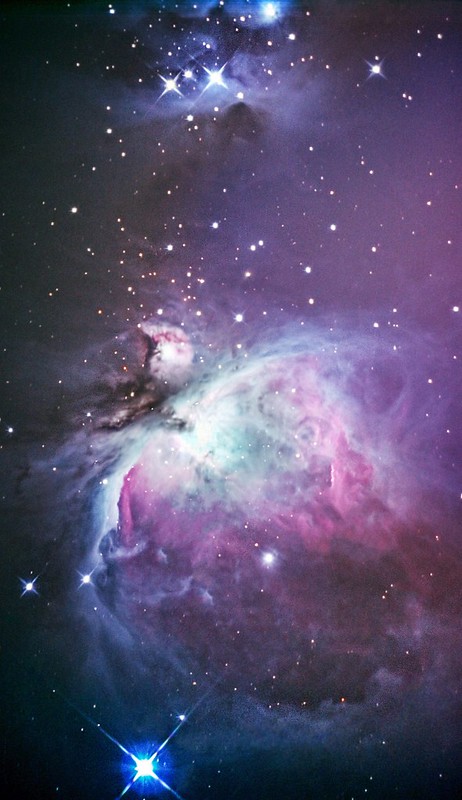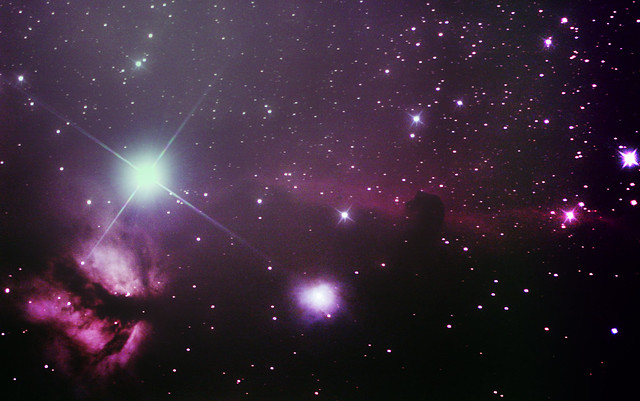I'ld love to create a how-to guide on astrophotography, although a full length article detailing my workflow would probably bore any reader to death. In this post, I will be going slightly more in-depth on the practicalities of Astrophotography, particularly on the topic of post processing. Here, I will explain how I got the image of the Orion Nebula as I uploaded in
this post
Before I go any further, I'ld like to mention quickly the three main components of Astrophotography. These are data acquisition, stacking, and post processing. Data acquisition refers to the actual act of going out to take photos. The actual setup of astrophotography equipment deserves an entire article in its own right, and there is already quite a large amount of information on this, because it is the first, and perhaps most important step. To cut the long story short, data acquisition for deep sky astrophotography involves taking a series of extended exposures, each of which are known as sub-exposures (or subs for short), and subsequently combining them in a process known as stacking.
Stacking is one of the key techniques in astrophotography, where catching faint light is of utmost priority. An extended single exposure can only do so much before mount tracking errors, sudden shakes, or unfortunate incidents like planes crossing the field of view destroy the image. To prevent this, multiple images are combined to create a master exposure, a high data RAW (e.g. TIFF) file where data can be extracted from through post-processing software, such as Photoshop. In order to stack images, it is necessary to have stacking software. A free example (and one of the best, in my opinion), is deep sky stacker. Aside from just the sub exposures, other types of exposures such as dark frames and bias frames are also applied, which I will elaborate further in another future article.
Before I bore you any further with massive walls of text, here is a picture of what one sub exposure looks like. This particular exposure is 20 seconds long, and shot at ISO 800.
Here, you can see that the sky background glows a bright orange. This is the effect of heavy light pollution from the city, with mercury-sodium lamps blasting orange light into the atmosphere and drowning precious starlight. The inner nebulosity is still clearly visible, with a hint of the outer arms, as well as nebulosity in the running man nebula. However, with a nebula as bright as M42, astrophotography from cities is still possible.
The next image below shows a stack of a few hundred of such sub-exposures. The total integrated exposure time, adding all the data from the subs, is about 1 hour.
The first thing you may notice upon seeing this picture is that it appears to lack the detail of the final image. In fact, it appears less detailed than the original sub exposure! Surely stacking hundreds of subs would create something that looks better than one!
Well, it is important to think of these preliminary image files not as simply pictures on a film, but as a data file. The second image is a massive 32 bit TIFF file (although it is a JPEG here, since I can't upload TIFF files to blogger), as compared to the 8 bit JPEG above. TIFF files are normally hundreds of megabytes, while JPEG files of the same resolution are normally less than 10 MB. Aside from this, the image noise, or graininess, is much more pronounced in a single sub than the stacked image. Image noise drowns out actual data, so the low noise TIFF actually contains much more data (signal-to-noise ratio) than the original sub.
Now that we have the stacked image, it should be clear why post-processing is such an integral part of astrophotography. Firstly, it removes the unwanted orange colouration of the background sky, which plagues all images taken from city centres, all the way to even suburban sites. Secondly, it helps to pull out faint detail from the high data RAW file to show the fullest extent of nebulosity captured by the original data files.
In order to do so, I applied a series of curves to stretch the histogram data. Data stretching increases the visibility of faint areas, as well as to increase the overall contrast. Typically, several iterations are done, with layer masks introduced in certain cases to improve dynamic range, or to even out uneven field illumination. In the case of dynamic range, the dynamic range of the orion nebula is actually quite large, due to the core being much brighter than there outer areas. As such, layer masks are applied to prevent overexposure (data clipping) of core detail.
In between stretching, I also alter the colour balance to give a more neutral colour to the sky background. Normally, the cyan and blue channels are increased to neutralise the effect of the orange-red skyglow. Further changing the degree of colour balancing on the shadows, midtones and highlights separately gives further control, allowing the colour balance of the nebula itself to be maintained.
Aside from stretching and rebalancing the colours, I also manually edited some of the stars to remove star trails arising from the optical issues of a parabolic mirror (and bad collimation). Preferably, such issues should be settled during the data acquisition stage, although in this case I only solved the problem afterwards.
Once again, here is the final image.
Compared to the original sub-exposure and stacked RAW file, this image shows quite a lot of detail that is only extracted through post processing. Indeed, this is why post processing is an integral part of deep sky Astrophotography. Within the photography community, post processing is something that is highly controversial, with opponents chanting the mantra that everything should be done right in camera. Such matters are mostly personal preference, although the fact that astrophotography necessitates this makes it a form of photography not for the purist.
A question that many ask, therefore, is whether these images are 'real', or truly representative of what is out there. The answer is actually both yes and no. Yes in the sense that what you see in the image really exists in space, but no in the sense that no human eye, through any optical instrument, will ever see such a view. To me, the fine balance between showing what's real, as well as making the image beautiful, is struck here. Perhaps, this is what makes astrophotos taken by yourself special to you, in that the final image is representative of YOUR opinion.












